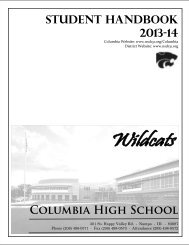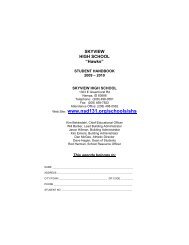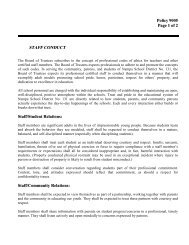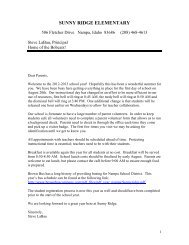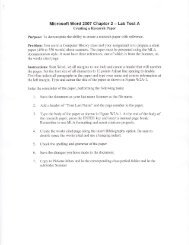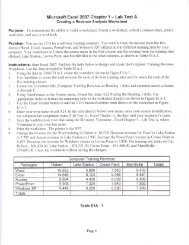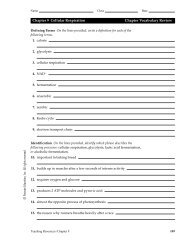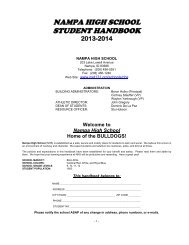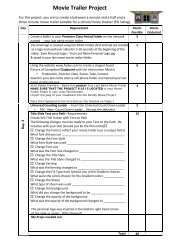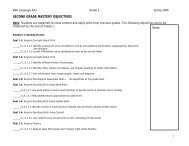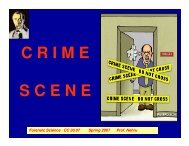Microsoft PowerPoint - 28- protists revised.pdf - NSD Main
Microsoft PowerPoint - 28- protists revised.pdf - NSD Main
Microsoft PowerPoint - 28- protists revised.pdf - NSD Main
Create successful ePaper yourself
Turn your PDF publications into a flip-book with our unique Google optimized e-Paper software.
Amoebozoans have lobe-shaped pseudopodia• Amoebozoans– Are amoeba that have lobe-shaped, ratherthan threadlike, pseudopodiaGymnamoebas• Gymnamoebas– Are common unicellular amoebozoans in soilas well as freshwater and marineenvironments– Include gymnamoebas, entamoebas, andslime moldsCopyright © 2005 Pearson Education, Inc. publishing as Benjamin CummingsCopyright © 2005 Pearson Education, Inc. publishing as Benjamin Cummings• Most gymnamoebas are heterotrophic– And actively seek and consume bacteria andother <strong>protists</strong>Entamoebas• Entamoebas– Are parasites of vertebrates and someinvertebrates40 µmPseudopodia• Entamoeba histolytica– Causes amebic dysentery in humansFigure <strong>28</strong>.24Copyright © 2005 Pearson Education, Inc. publishing as Benjamin CummingsCopyright © 2005 Pearson Education, Inc. publishing as Benjamin CummingsSlime Molds• Slime molds, or mycetozoans– Were once thought to be fungi• Molecular systematicsPlasmodial Slime Molds• Many species of plasmodial slime molds– Are brightly pigmented, usually yellow ororange4 cm– Places slime molds in the clade AmoebozoaFigure <strong>28</strong>.25Copyright © 2005 Pearson Education, Inc. publishing as Benjamin CummingsCopyright © 2005 Pearson Education, Inc. publishing as Benjamin Cummings7



